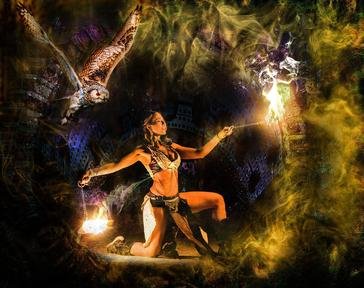Quiz Answer Key and Fun Facts
1. The very image of this dance calls up decades of frustration and various partners limping from stepped-upon toes. In the 18th century, this basic box step dance was considered scandalous and vulgar because the male must grasp and hold the waist of the female. What is this ever popular dance style that is often associated with the music of the Strauss family?
2. When I first saw this next dance, I thought if you can stomp your foot or brush your shoes on the ground then you could make a go of it. Not so fast, I found out that to make a rhythmic percussive sound with my feet takes more skill than I could muster. So name the dance where I had no chance actually to perform such moves as the heel click and shim sham shimmy?
3. Don't want to remember a lot of complicated steps? Want to dance without touching other people and enjoy such tunes as "Boot Scootin Boogie", "Achy Breaky Heart" or even "The Macarena"? Then this next dance is for you. What is the general name for dances that have a uniform number of choreographed steps performed by groups of people at the same time?
4. Even today, years later, the horror of dancing at my wedding haunts my sleep. The dance is called the horah, and I recall how my feet tangled and I fell, bringing the other dancers and my wife (who was being held above out heads) crashing to the floor. As with numerous other traditional folk dances, the horah, is a type of dance referred by what geometric name?
5. It was made abundantly clear to me that I would likely never have found a noble bride in 17th Century France. My distinct lack of skill at learning basic social dances would have doomed me as a poor marriage prospect. Which of these styles of dance would have been required when attending a ball at the court of Louis XIV?
6. Given my lack of grace, there really is very little chance that I could master a dance style based on the ability to move, twirl and jump gracefully with proper posture, balance and arm movements, often while supporting your body weight using only the point of your foot. What is this most classical of dance styles that is taught and performed all over the world?
7. I lived for a time in the American Southwest. I had to hide to avoid any social function because many events would end up having music and degenerate into a torture chamber of dance. What favorite dance style usually includes four couples with steps announced to the participants by a "caller"?
8. Take it from an expert, while dancing can be romantic, it is nearly impossible to create a romantic mood when your partner is concerned about broken toes and pulled muscles. However, when done safely, there is perhaps no more intimate dance then what ballroom style that originated in Argentina?
9. In India, there are many traditional dance forms with graceful choreographed elements that take years to master. Perhaps the most well-known Indian dance originated amid the storytellers of India's nomadic northern tribes. What is the dance with a name that translates to "story" in Sanskrit?
10. If when you hit the dance floor you become a danger to yourself and others, then this next dance is not for you. What is the dance style that combines hip-hop, free dance and gymnastic movements, and has origins dating to the 1970s in African and Latin-American urban communities?
Source: Author
adam36
This quiz was reviewed by FunTrivia editor
looney_tunes before going online.
Any errors found in FunTrivia content are routinely corrected through our feedback system.

